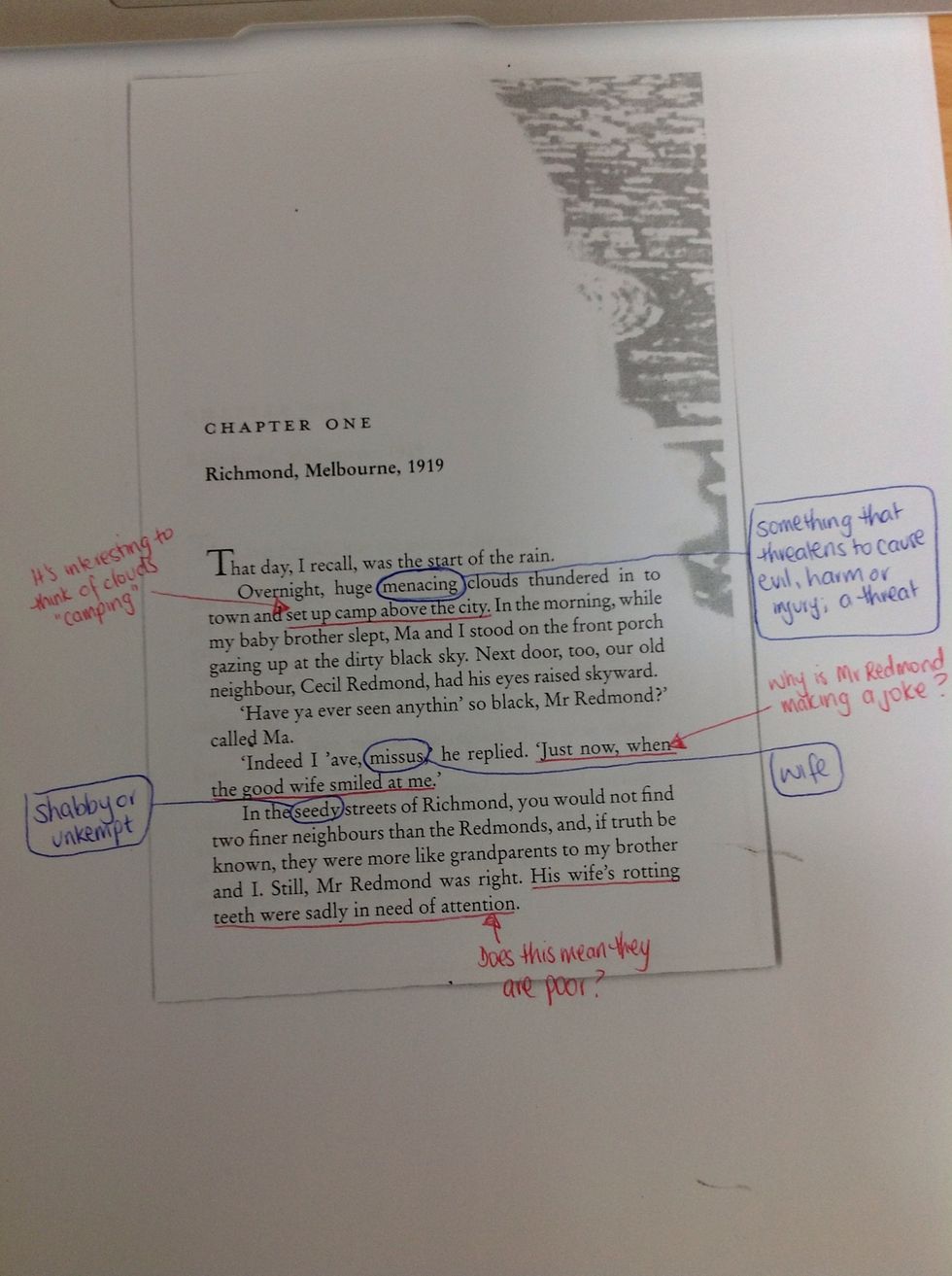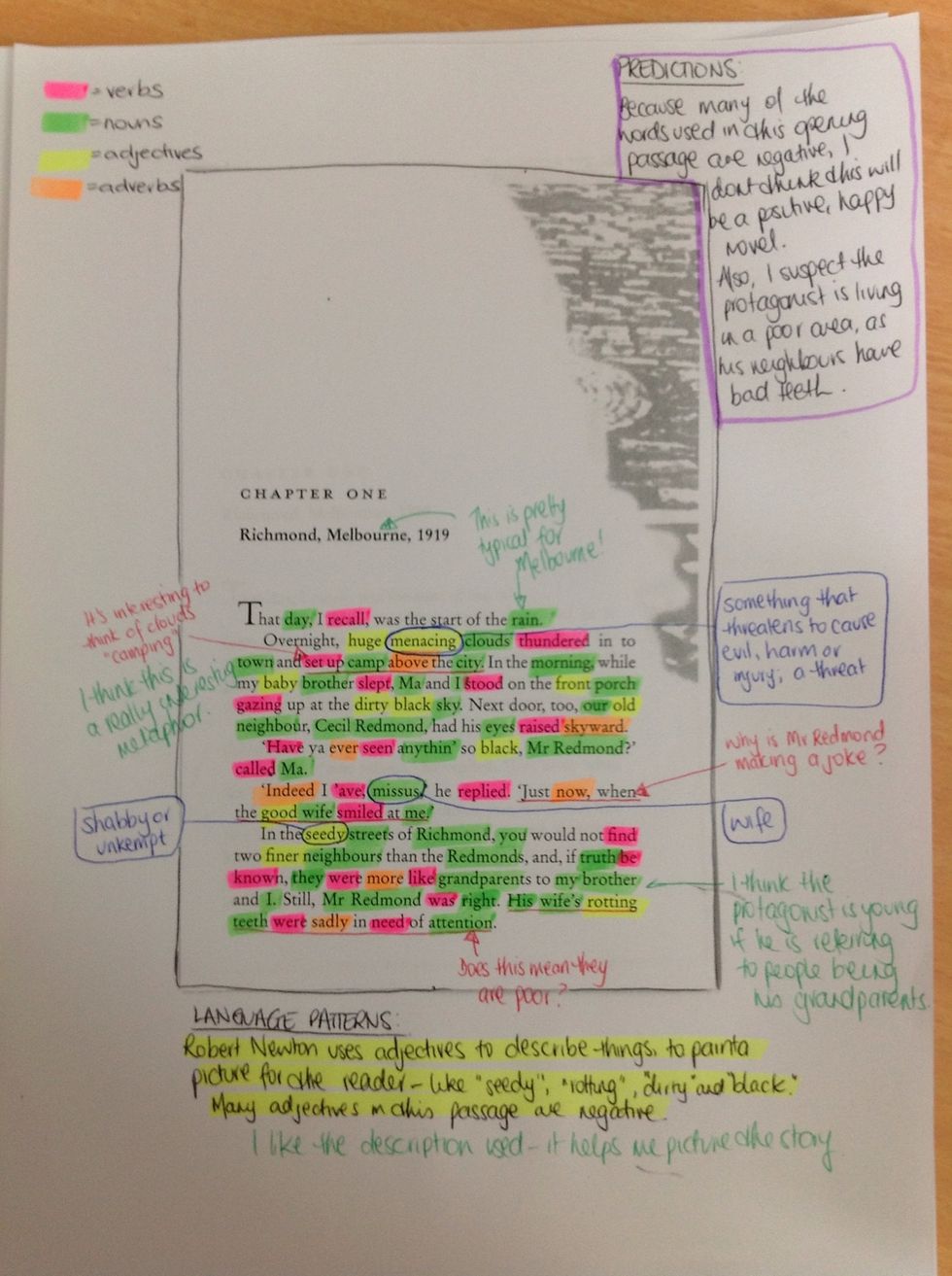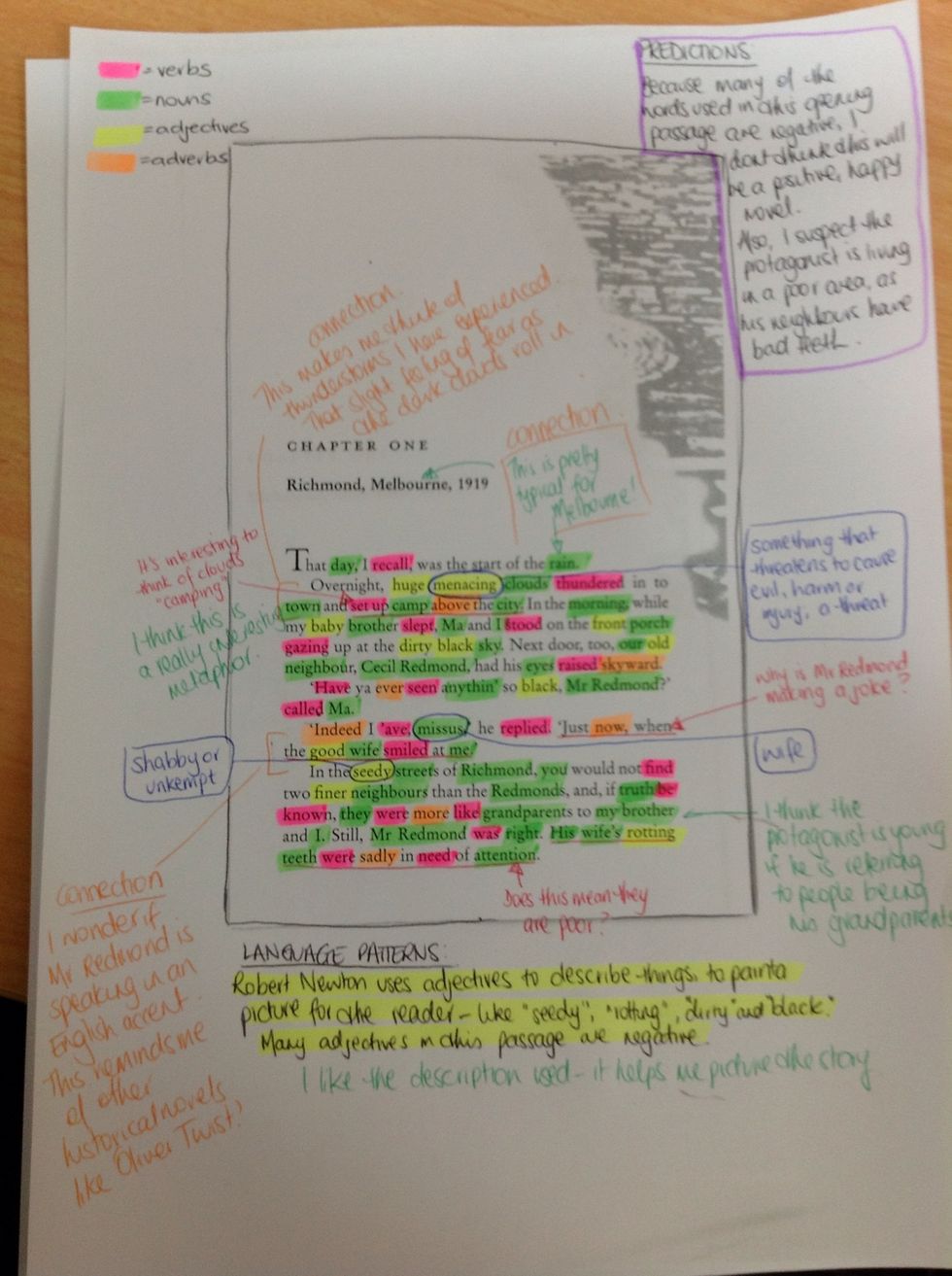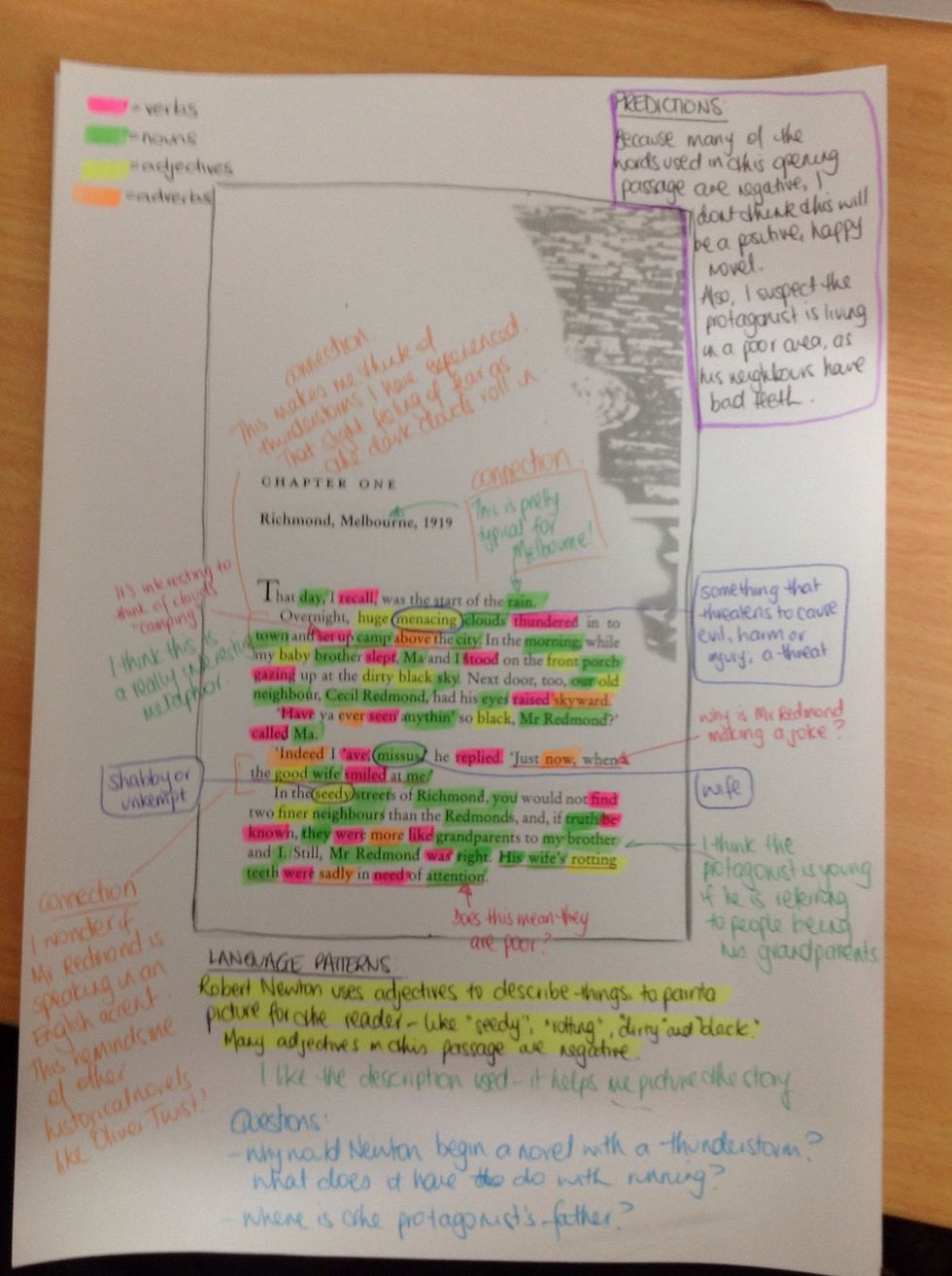How to do a close reading
Step by step instructions on how to read for meaning using Robert Newton's 'Runner' as an example. With thanks to Lisa McNeice.
2415
STEPS
TOOLS
Reading closely means reading for meaning and understanding. Follow these 8 steps to perform your own close reading.

To begin, read your passage slowly.
Task 1: Circle any vocabulary you are unfamiliar with and look up the definition. Double check that the definition makes sense in the context of the text.

The words I wasn't sure about here were: Menacing, seedy and missus.
Task 2: Language Choice - underline any language that attracts your attention for any reason. Why do you find it interesting? Jot down your reasons.

Task 3: Verbs, nouns, adjectives and adverbs. Highlight in different colours the ones you find in the passage. What do you notice? Are there any patterns? Comment on your findings.

Task 4: Predictions - what might happen next? Why?

Task 5: Opinions and reflections - what do you think of the story/narrators/characters?

Task 6: Connections - does the task remind you about your own experiences? Or other books and films? What are the similarities?

Task 7: Questions - note them down, and remember there is no such thing as a stupid question. Try to list more open questions than closed questions.

Task 8: What key themes from the novel do you think are reflected in the passage?

And you are ready to discuss your passage!
The creator of this guide has not included tools
The Conversation (0)
Sign Up